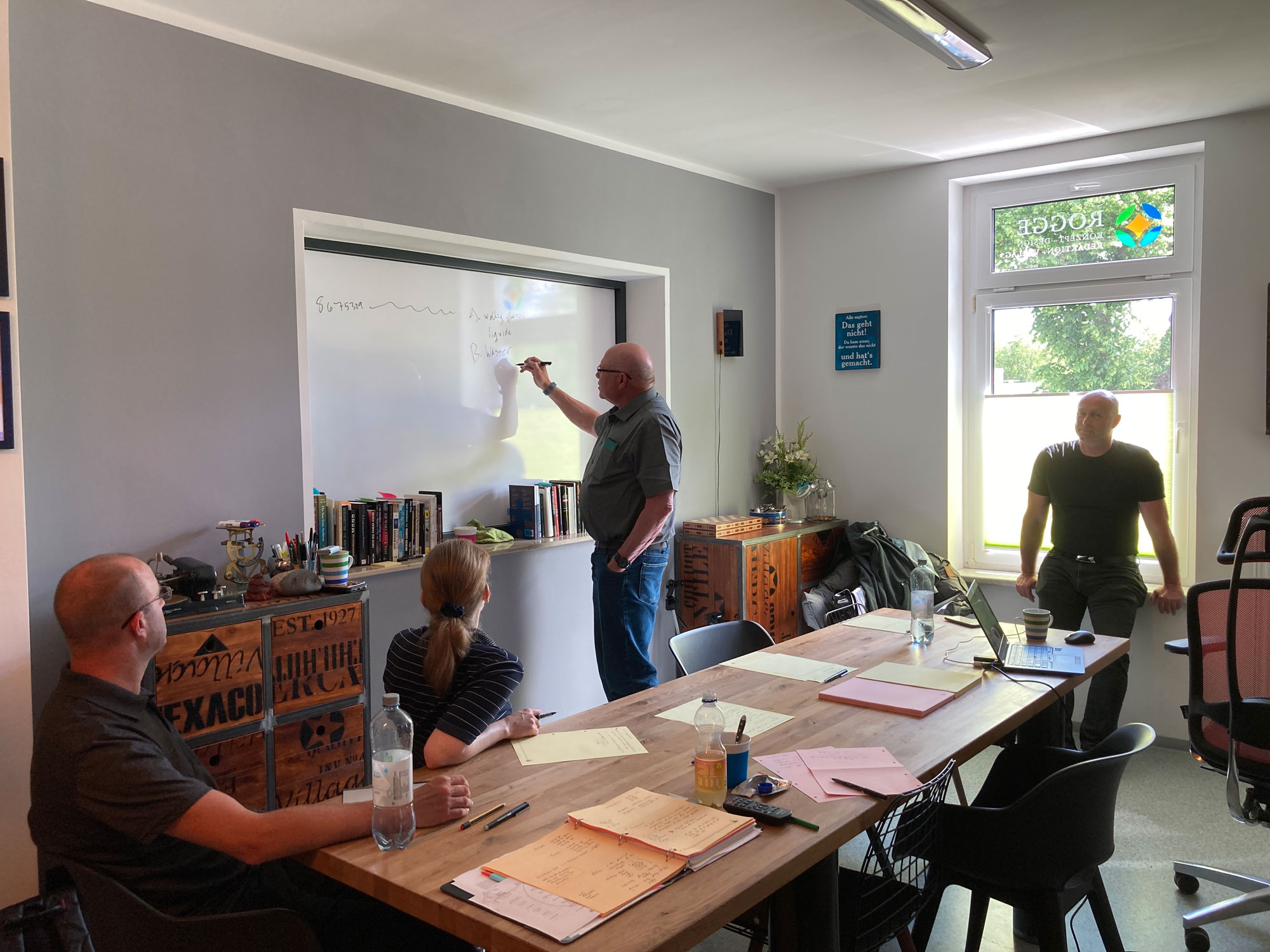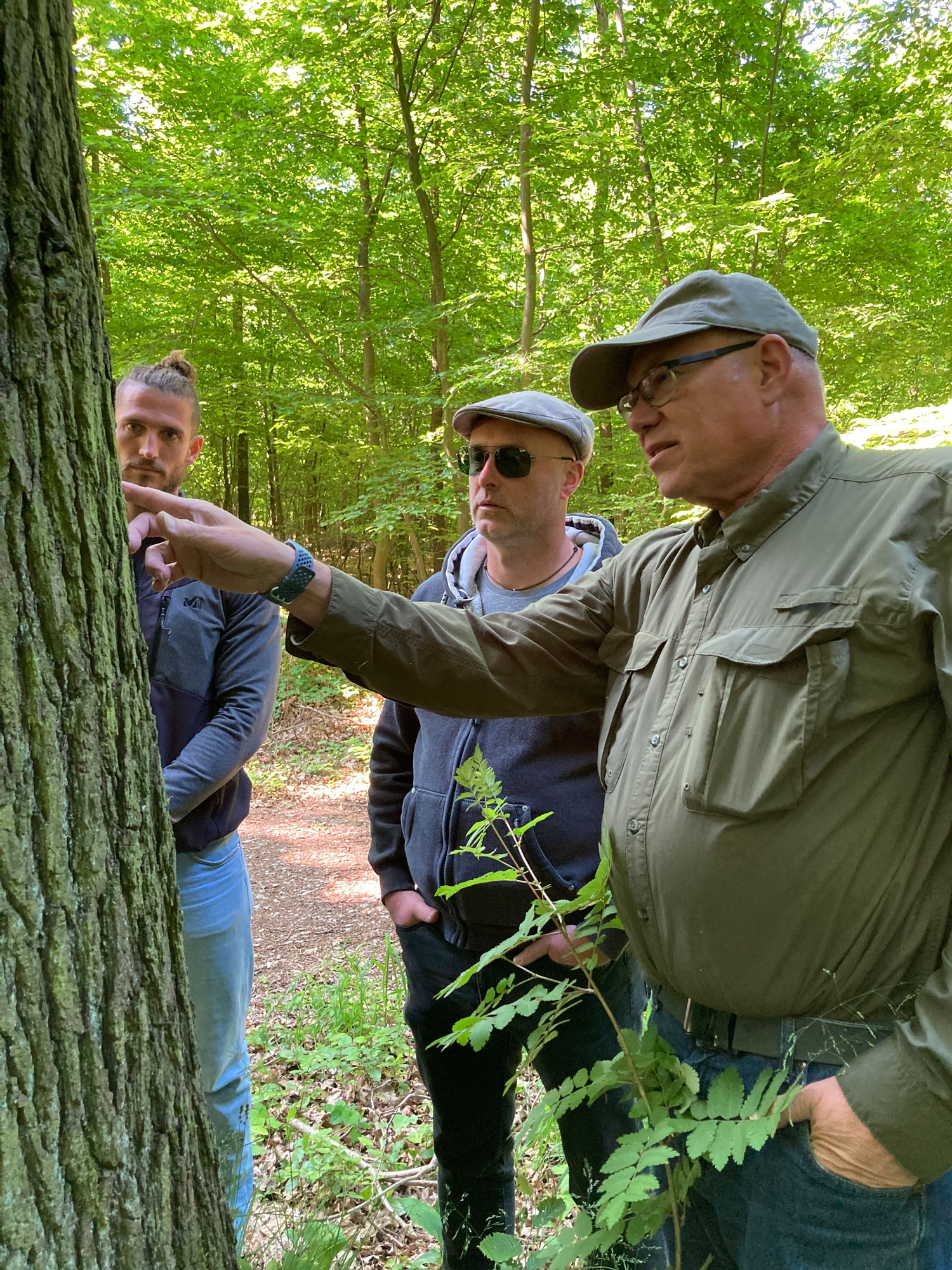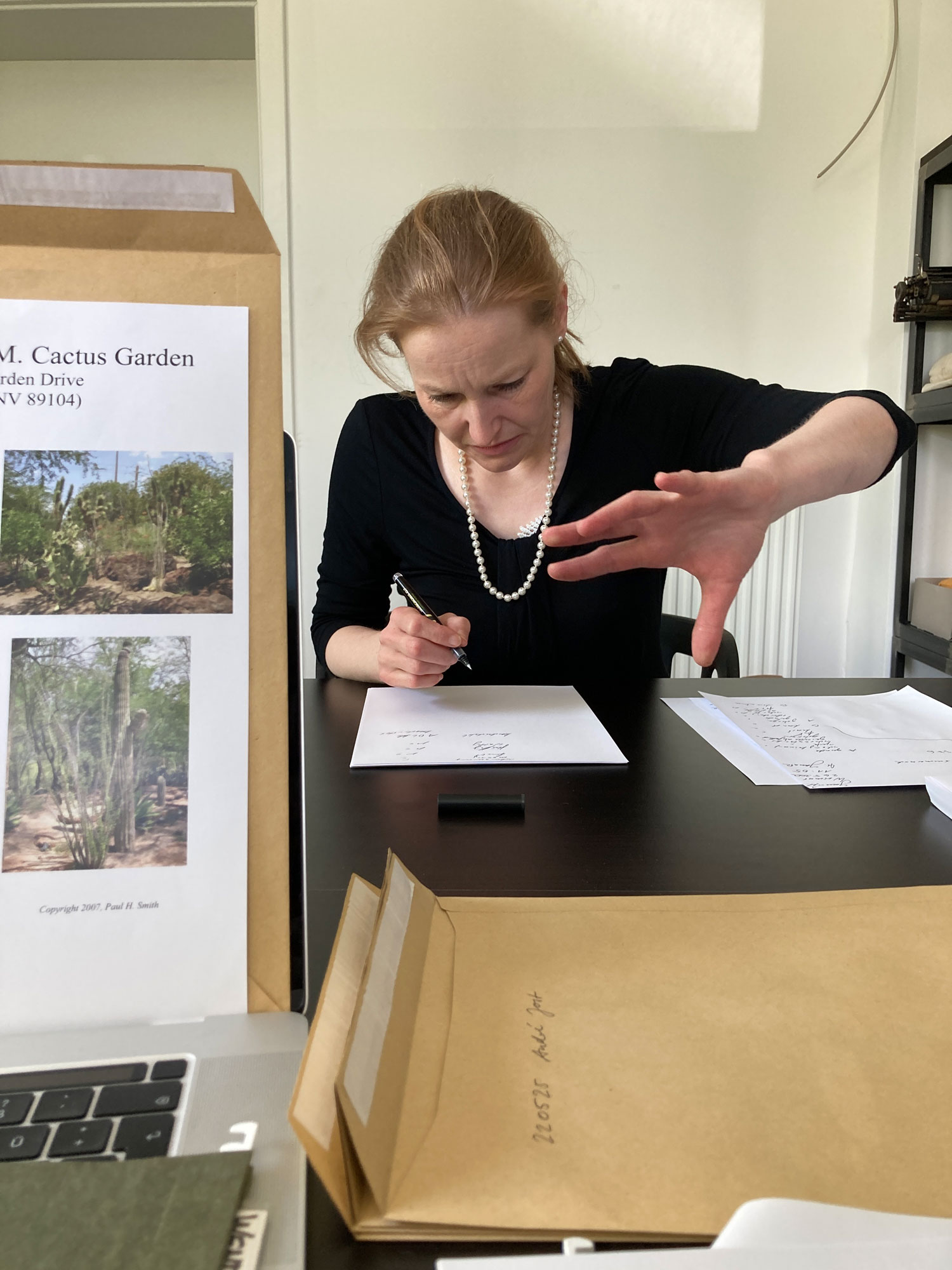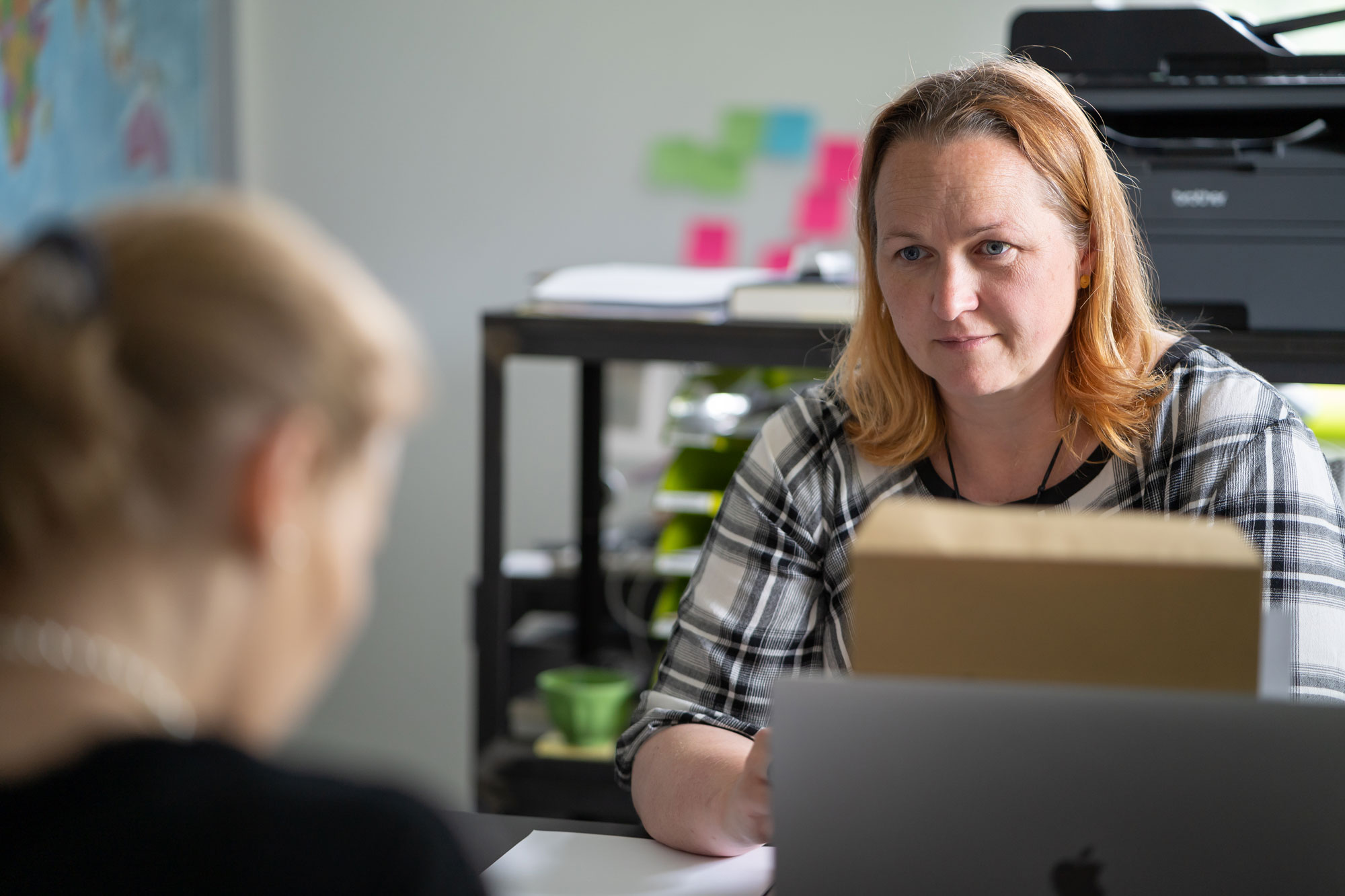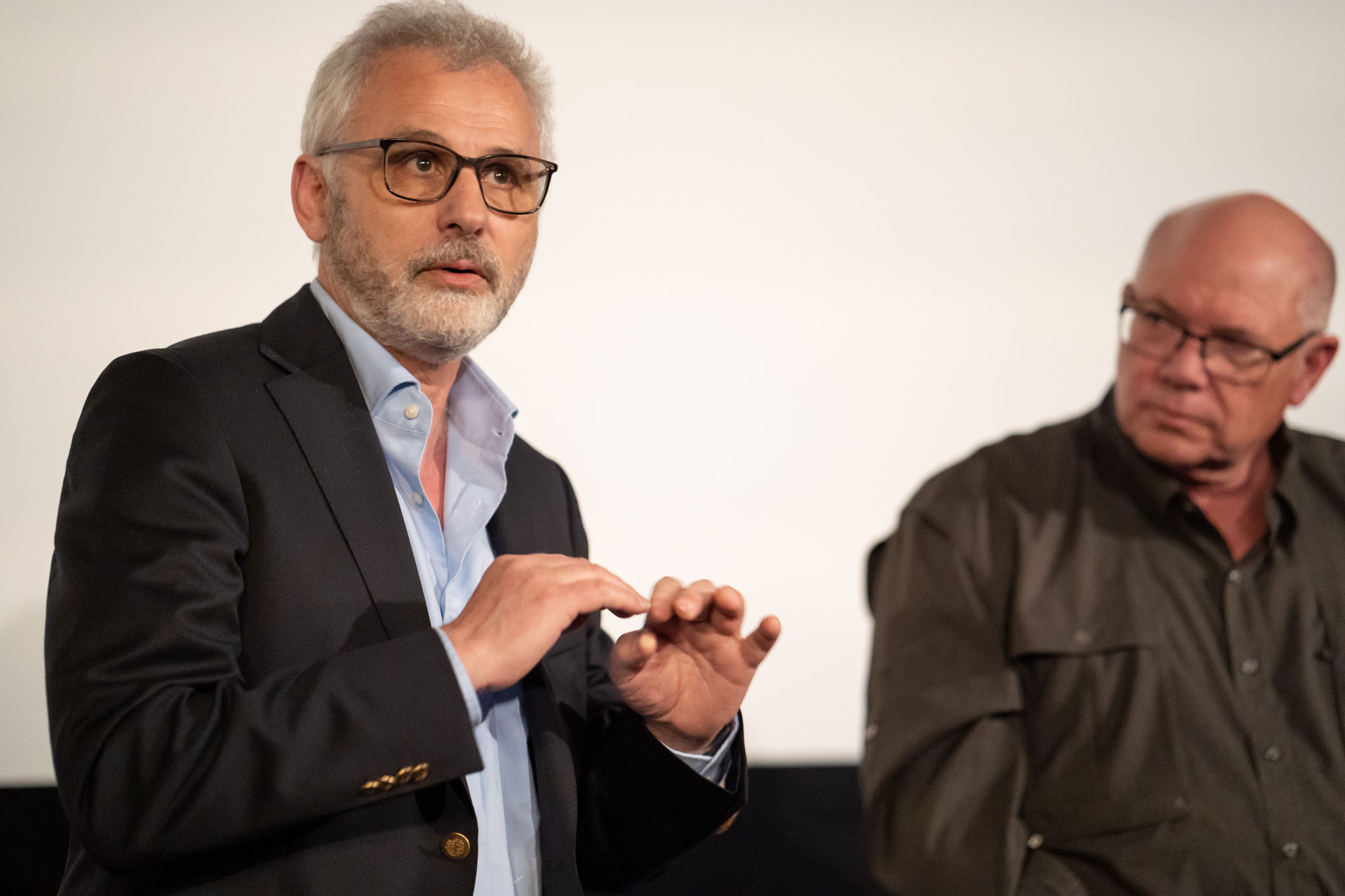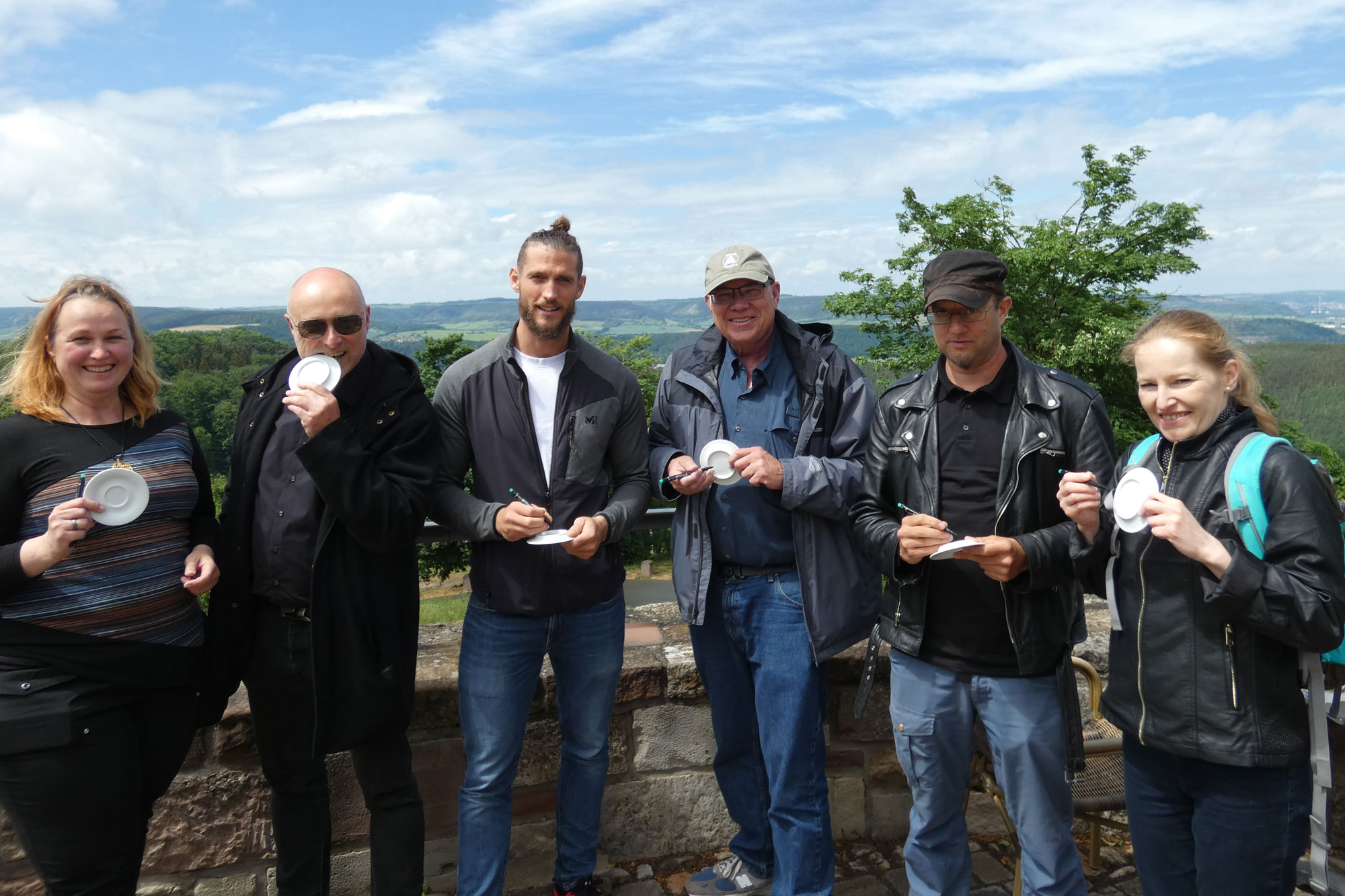Gold Standard – CRV-Training at RVIS
It has been 40 years since Ingo Swann, the “Father of Remote Viewing,” started teaching a few select individuals from the military unit at Ft. Meade the specially developed method of “Coordinate Remote Viewing” (CRV, later “Controlled Remote Viewing”). Hal Puthoff and Ingo Swann, who at that time had already been researching remote viewing for 10 years, succeeded in creating a working method, which makes Remote Perception learnable and usable by everyone and yet be suitable for operational remote viewing as well. The “psi-spies” of the Star-Gate unit are the source of remote viewing as taught in the civilian sector today, and Paul H. Smith is one of them.
The quest for the original
In 1996 Remote Viewing came to Germany in the form of the TRV method, which three German students studied in California with Ed Dames (here is the report). A lot has happened since then. The technology was passed on and new versions developed. In Germany, over the years, a rather unique form was established as the dominant method. Today, more than 20 years later, about ninety percent of active remote viewers in the German speaking countries work with these variations. The historical background to CRV, TRV and the individual derivatives and their differences remained largely unknown or have not been addressed.
Germany is not an isolated case, however; the development of the remote viewing landscape has been similar in other countries. It is therefore not surprising that for many people who come to Paul H. Smith to learn the original CRV method, this is not their first contact with the remote viewing. Often these are viewers who are already working with other methods, and are looking for a better understanding of the technique through their own research of methods and history.
Such was the case for the four German remote viewers Alexander, André, Jana and Arbo, who are the subject of this article.

Der erste deutsche CRV Basic Course mit Paul H. Smith im Mai 2022 (Foto: Anatoli Oskin)
 The current situation of the original Puthoff/Swann CRV method in today’s remote viewing community is like a small monastery where all the magic originally started and where that magic can still be found, but which few outsiders can even find on a map. Even some who do find it turn away because they are looking for an easier cheaper path. Only a handful of the now thousands of remote viewers in the world have been fully trained in the original method. For the most part they are not a loud presence on media channels. Instead, they work quietly behind the scenes on operational sessions which they are rarely free to release or show in the public domain.
The current situation of the original Puthoff/Swann CRV method in today’s remote viewing community is like a small monastery where all the magic originally started and where that magic can still be found, but which few outsiders can even find on a map. Even some who do find it turn away because they are looking for an easier cheaper path. Only a handful of the now thousands of remote viewers in the world have been fully trained in the original method. For the most part they are not a loud presence on media channels. Instead, they work quietly behind the scenes on operational sessions which they are rarely free to release or show in the public domain.
Ingo Swann himself trained only a handful of remote viewers during his lifetime. Thus, it is up to the latter to pass on the method. Even many of the viewers of the military unit from Ft. Meade known today did not learn from Ingo himself, but in turn from his first students. Of the few who know the original version, there is only one source available today for training this CRV version: Paul H. Smith.
Adding to the difficulty, Paul’s training is not without reason billed as the toughest program of its kind–even the “Gold Standard”–but his students know they are embarking on a demanding instructional program that, even at its best, takes months to advance to Stage VI. And it doesn’t stop when they leave after the intense weeks of classroom learning. The classes Paul teaches are small, with a one-on-one or one-on-two personnel ratio, and accordingly, not inexpensive. And, not entirely unimportant in our part of the world, you had to get on a plane and fly over to visit him in the U.S. —until now!
Now here comes the first news: Paul H. Smith came to Germany this year for the first time to teach a class of 4 students in the CRV Basic Course locally. I was host and assistant for this course–and afterwards had the advantage of attending an Intermediate course with Paul right here together another student. I had started my RVIS training in Utah last fall (see here the report from last year).
The course followed the tried and true pattern, with one change: Paul made the effort to translate all his lectures into German. Even the course language and the session language were (mostly) German. An offer from Paul that was extremely interesting for German-speaking students–even if they do speak English as a foreign language. We knew he could speak German because he had spent several of his younger years over here. Nevertheless, it was of course a particular challenge to translate and explain the technical subtleties of the remote viewing vocabulary.
Six days of challenging learning
The course was limited to 4 places, there were even a few applications from other European countries, but it was decided to start with a homogeneous German speaking class. Three participants were from Germany, one from Austria. All of them had previous experience with other varieties of Remote Viewing, some also knew his DVD course. This may certainly have been an advantage, because no one sitting in the classroom had the question any longer as to whether remote viewing works, and whether he himself would be able to do it. After all, the theory that they had learned before had little relevance, because it was necessary to go back to the beginning to rebuild the correct theory step by step. We discovered that even experienced remote viewers will find enough new puzzle pieces and “wow”-moments to make it well worth the effort.
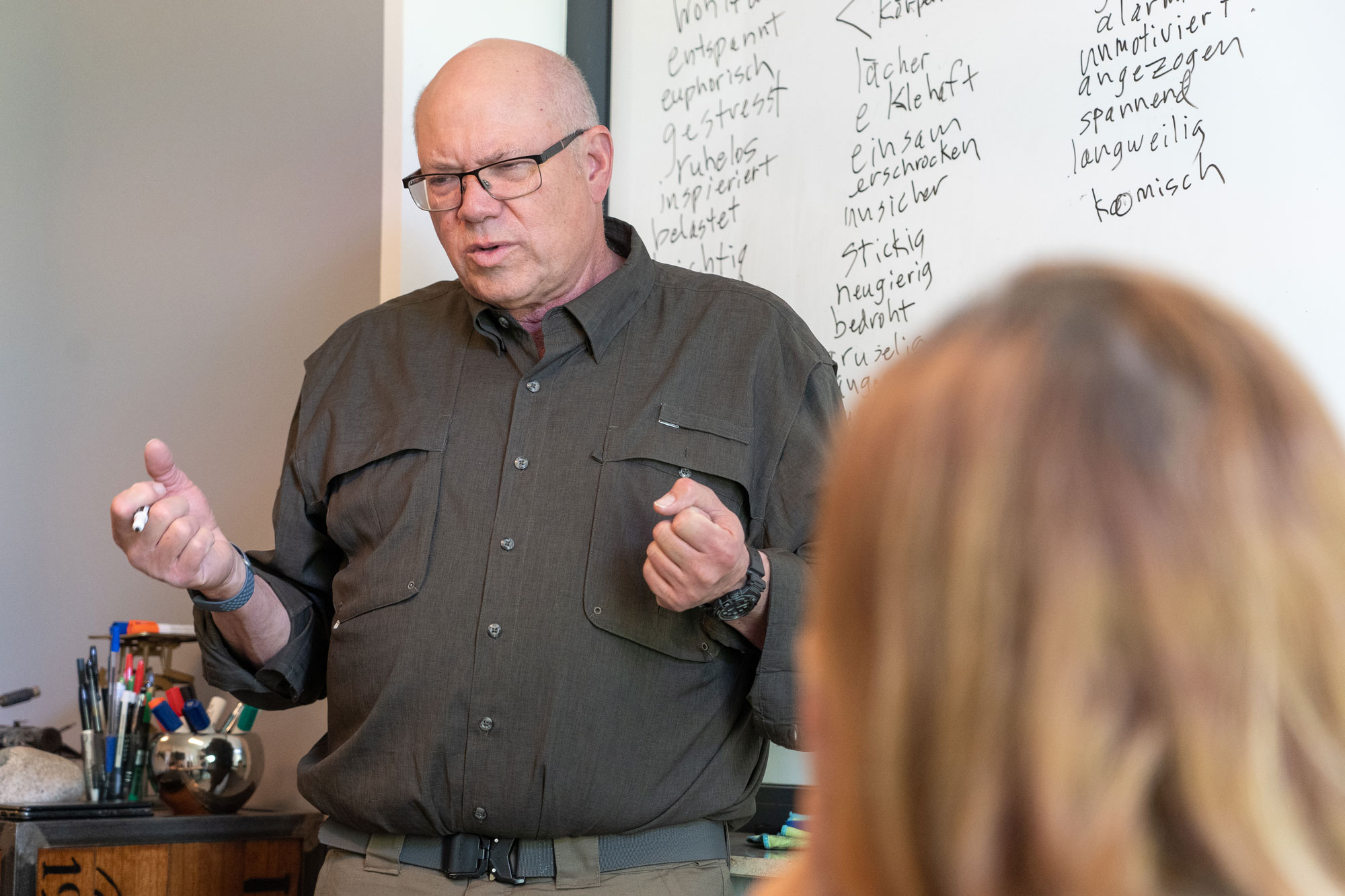 Paul keeps his teaching closely to the way Ingo Swann himself taught in his time. The now infamous essay writing is just as much a part of it as the structure of the individual exercises. Particular emphasis is given to Stage 1, because proper entry and correct decoding and objectification of Stage I information determines to a large extent how well the rest of the session goes and how far one can reduce the risk of slipping into AOLs. As a result, students do not arrive at Stage 2 exercises until the fourth day.
Paul keeps his teaching closely to the way Ingo Swann himself taught in his time. The now infamous essay writing is just as much a part of it as the structure of the individual exercises. Particular emphasis is given to Stage 1, because proper entry and correct decoding and objectification of Stage I information determines to a large extent how well the rest of the session goes and how far one can reduce the risk of slipping into AOLs. As a result, students do not arrive at Stage 2 exercises until the fourth day.
I remember once hearing one of the more “modern” instructors proudly say about his program, “What took them weeks and months to teach back then, we can teach at a weekend today.” A questionable statement once you have experienced what is possible with this method even in the first stages if you study it carefully. Accordingly, each of our 4 students experienced one or more personal “stellar moments” during the exercises, which were all the more impressive because everyone already had his or her previous experiences with Remote Viewing for comparison.
 By the way, the structured in-session feedback is a great learning aid during the course. During practice exercises, two monitors operate simultaneously in two different viewing rooms, alternating with all students. I still remember my own first session with Paul as a monitor, and how nervous I was at the time. Then I imagined him sitting in that same place himself forty years ago, later reporting that Ingo was a strict teacher, attentive to detail. While the viewers have recovery breaks between sessions due to the rotating system, the monitors do not. I wondered last year where Paul and Bill got the energy from. By now I think I know the answer.
By the way, the structured in-session feedback is a great learning aid during the course. During practice exercises, two monitors operate simultaneously in two different viewing rooms, alternating with all students. I still remember my own first session with Paul as a monitor, and how nervous I was at the time. Then I imagined him sitting in that same place himself forty years ago, later reporting that Ingo was a strict teacher, attentive to detail. While the viewers have recovery breaks between sessions due to the rotating system, the monitors do not. I wondered last year where Paul and Bill got the energy from. By now I think I know the answer.
Already over? Nooo…!
On the sixth day, everyone was exhausted, happy, and no one really wanted it to end. Part of Paul’s program involves keeping records from the beginning of student performance and each session. Based on these records and after the personal impressions of the course instructors, each student receives an in-person individual assessment at the end of the week with an analysis of his or her strengths and weaknesses and a recommendation on the further training plan. And now, with the end of the in-house part of the course, the second section begins, which will last a few months for each student: Homework! Even after the course week, the contact between Paul and his students remains, and since we all know that you only get better through practice and experience, the red correction notes on the submitted homework are eagerly waited for. (We hope to see you all again for the Intermediate course!)
And now the last pleasant news for all who have read this far: There is still some of the yellow and pink writing paper left. Four excellent German viewers made an impression. We will do it again, probably next year. If you want to be notified as soon as we know when, feel free to leave me your contact (e-Mail).
Welcome visitors
We invited visitors to the classroom on the last day of the course: Dr. Gerhard Mayer, (IGPP Freiburg and chairman of the German Society for Anomalistics) who also visited us the evening before as a panel guest at the book premiere; Gunther Rattay (TRV Training), one of the three German pioneers who brought Remote Viewing to Germany in 1996; and Anatoli Oskin (Photography), himself trained as a Remote Viewer but this time armed with a camera. The three visitors had the opportunity to observe some sessions and a teaching unit. To Anatoli we owe most of the photos that can be seen here (photographer’s credits at the picture).
Book premiere of the German version of “Essential Guide”
A small “change of pace” within the course week was the premiere of the book “Essential Guide: Grundlagen des Remote Viewing” by Paul H. Smith (original: The Essential Guide to Remote Viewing), which had been translated into German and had just arrived from the printing house a few days before. This was followed by an evening event in a movie theater, and then a small dinner and private discussion reception at Paul’s hotel for the panel guests and course participants. Some German remote viewers had made the trip especially, and they too had the opportunity to meet Paul for conversation at a private dinner the night before.
report by Jana Rogge, June 2022

For the first time the original CRV was taught in Germany
Trainer Paul H. Smith, Ph.D. from RVIS, Inc. (right) and host / assistant Jana Rogge (left)
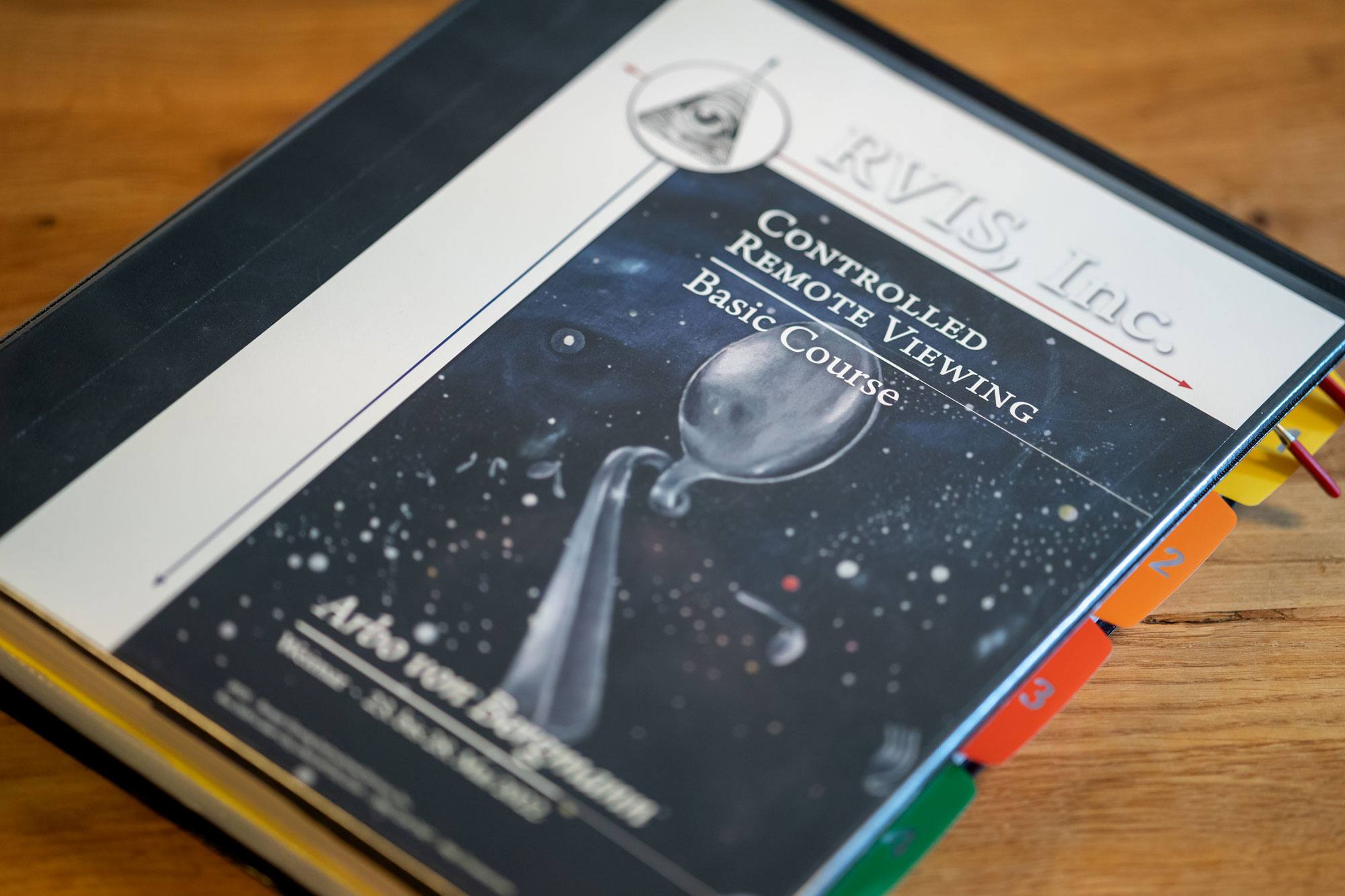
Everything on paper
Each of the students filled an entire binder with paper over the course of this 6-day course week, including course notes, essays, exercises, and a total of at least 12 sessions.

Red pen!
The day usually begins with checking homework and essays. This ensures that the students have really captured everything and can put it into the right context. More than one student complained of hand pain after so much unaccustomed analog writing.

Harold E. Puthoff Lecture
A highlight of the course week is always the live lecture by Hal Puthoff followed by a Q&A session. Despite the time difference, we were able to accommodate this in the course program. To watch Hal speaking in person instead of just a recording is always special.

Proof of Work
Paul not only teaches theory, but demonstrates how it works with a demo session for which the students get to set the target. Everyone holds their breath in anticipation as someone who has been doing this for almost 40 years gets to work. Most definitely, in such cases, it is also extra difficult to detach yourself from the understandable but also problematic desire for a good session and focus entirely on the structure. Once again: A more than impressive hit!

12 monitored sessions
Each student completes a minimum of 12 practice sessions with monitor during the course week.

Thank you Petra!
If you want to learn, you also need food for the body. Petra Hermann, who has already made a name for herself in the cooking scene nationwide, organized a lot and took us under her wing personally for the second part of the week.

Public relations
In the evenings there was still time for two interviews with journalists who were interested in the topic.

Remote Viewing Visits
Gunther Rattay and Anatoli Oskin with Paul H. Smith

Stellar Sessions Evaluation
Session-Review with Alexander, Paul, Gerhard and Arbo (Photo: Anatoli Oskin)
Statements of the course participants

André
The course was very interesting and I am glad that I had the opportunity to have this experience. The first days were quite exhausting but equally exciting. Through the course and the experience I realize that I am now progressing very well in my self-study and I can also integrate a lot into my everyday life.
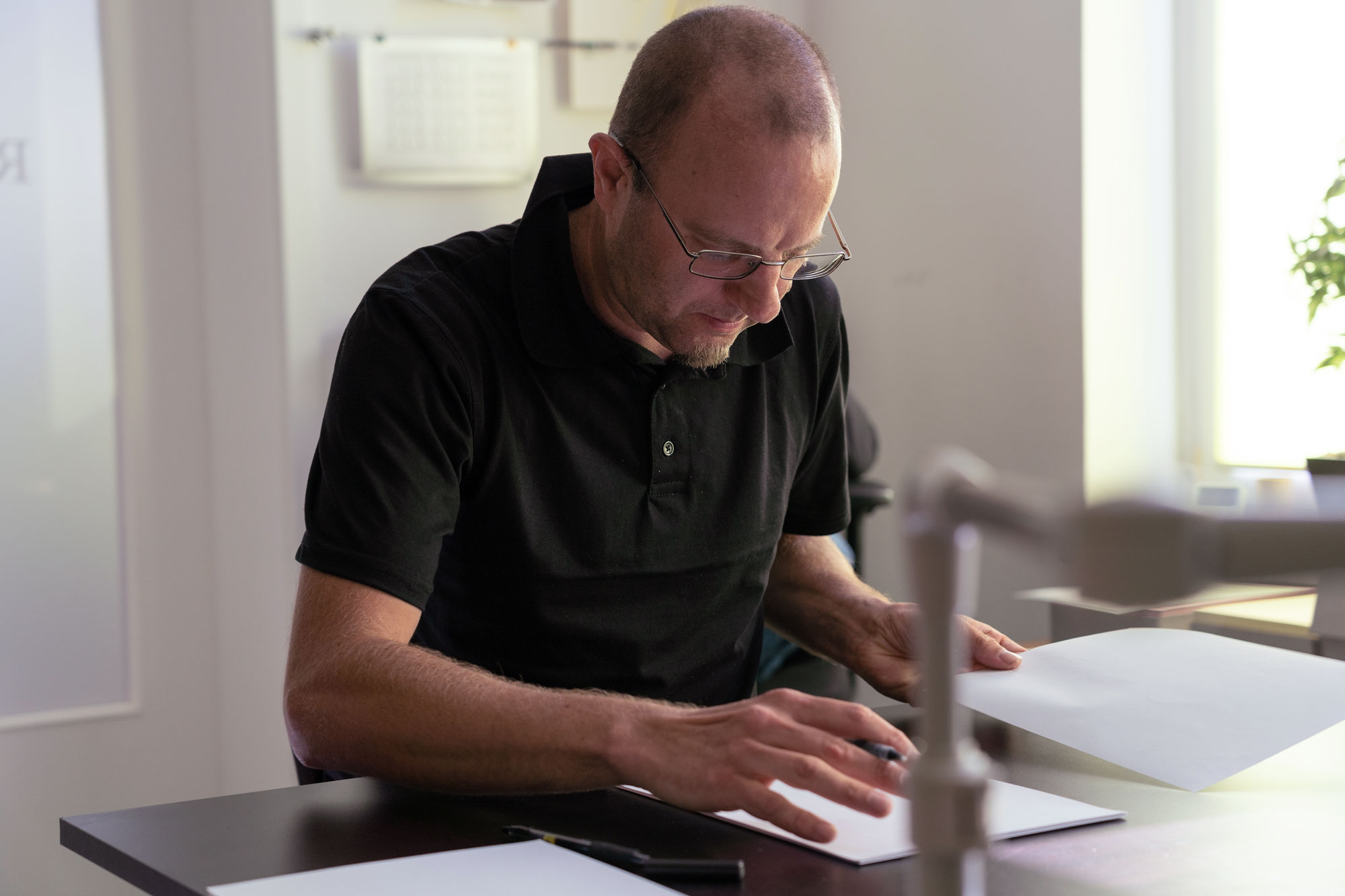
Arbo
The Basic CRV course with Paul H. Smith in Weimar, Germany was tough. It was based on a structural and proven curriculum that was tough. There was a lot of input and you were encouraged to master the Controlled Remote Viewing protocol.
This course is called the “Gold Standard Course” for a reason. Of all the RV trainings I’ve had, Paul’s was the most intense. I understood so much more subtleties in the technique than in the Remote Viewing deviates that are usually taught in Germany. If you want to learn the most original CRV, you are embarking on an unforgettable journey with a wonderful and true expert on the subject.

Jana
It was a beautiful, exhausting and intense experience that I would never have wanted to miss. Now, after the end of the course, I write summarizing that CRV, according to Ingo Swann, is more in depth. This means that perceptions are intensified with all senses, and as a result you stay longer at the destination and gain more data.

Alexander
After a week with very little sleep, muscle cramps in my right arm caused by tons of written pages, red eyes from watching and reading along and a head that feels like a wine balloon full of information, there is only one thing I can say.
Every day was filled with new insights, impressions and enlightening moments. Everything I previously knew about Remote Viewing was multiplied and it became clear to me through my own, now much more detailed results, how important it is to stick to the protocol structure of the original CRV taught by Ingo Swann.
It is and remains the “Gold Standard”.








